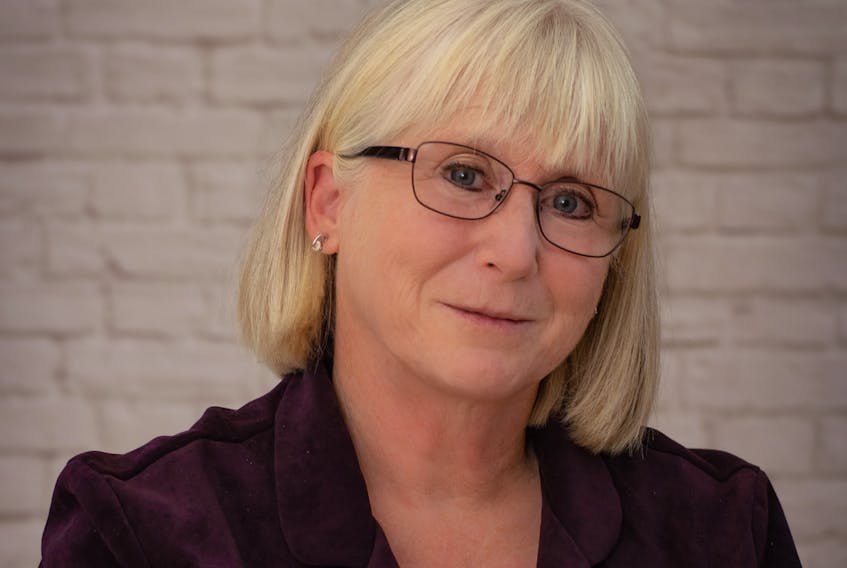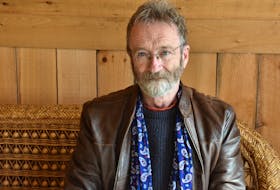Author Laura Best takes readers deep into the life of Elizabeth, a mother of two young children living on a farm in Nova Scotia, and struggling with mental illness, in her first novel for adults.
Exploring mental illness, the devastation it brings to women and their families and the power of love, Good Mothers Don’t (Nimbus Publishing) opens in 1975 with Elizabeth telling readers:
“I am well now.
“When the pink dawn draws near to my bedroom window I take comfort in those words. For a long time I wouldn’t have been able to make that claim, but now, if someone were to ask, “How are you, Elizabeth?” I could reply, “I’m very well, thank you,” and I’d be right, and could show proof if need be.”
In the book, Best then takes readers back to 1960. Elizabeth is living with her husband, and two healthy children in rural Nova Scotia. Having suffered a family tragedy when she was a child, Elizabeth finds herself now as a mother slowly coming apart. She thinks about harming herself and her children, and loses grip on reality.
“I resisted the urge to tell him that most all my thoughts harmed me. They churned inside and sent me off in so many directions and hardly ever allowed me to collect them properly,” says Elizabeth.
Eventually she is taken away to a hospital to be treated. Readers rejoin her in 1975 when she is living in a group home and follow her on her journey as she reclaims herself, her memory and her children after a long absence. Electric shock therapy left her with huge gaps in her memory. Beginning with only five words that she can remember she slowly pieces her old life together. She knows that Jewel and Jacob are her children, but she can’t picture their faces. More than anything she wants to find them.
“I can’t imagine giving up on Jacob or Jewel,” says Elizabeth toward the novel’s end. “Real mothers don’t do those kinds of things, but then real mothers, good mothers, don’t go crazy. “I don’t think I wanted to leave,” I try to explain. “I think maybe I had no choice.”

Shifting through time and different voices, including those of Elizabeth and Jewel, Best explores the ripple effects of mental illness, its treatment and the relationship between memory and self.
“I didn’t in the beginning set out to write about mental illness, but that is who the character was,” said Best in an interview from her home in East Dalhousie, a spot between the South Shore and the Valley, where she has lived all her life. “For me, the more I write, the more the characters seem to come out on their own. I feel them,” she added.
The book is set in the 1960s when mental illness was considered more of a taboo subject, but still today people often don’t want to talk about its pervasiveness, especially when it is close to them, said Best.
“So many of us have been touched by, or know someone – family members, or friends, or even ourselves – who have experienced mental illness,” she said.
Good Mothers Don’t grew out of three short stories she wrote. A former editor at Nimbus suggested she turn them into a book.
“I immediately said: ‘No!’. The idea frightened me,” she said.
Best, who is the author of several popular books for young people including Bitter, Sweet; Flying with a Broken Wing; and Cammie Takes Flight, started writing her new novel with the image of a young girl and boy watching their mother walking away from them across a field. She didn’t know exactly where the story was going except that the children knew their mother had been acting strangely and when she left, she told them not to follow.
Being a mother of three grown children herself, as well as a grandmother with a strong connection to her family and to her home, Best knew the book couldn’t end badly.
“That’s my hopeful side,” Best said quietly.
She felt strongly that what had kept Elizabeth going all the years she was separated from her children was her love for them, and her desire to be with them again – wherever that might be.
“I smile then, knowing that home is not an actual place as I once thought. Home is knowing that you belong in someone’s heart and they belong in yours,” says Elizabeth.
Other books on the shelf
Writer and teacher Bartin Barkhouse has written a children’s book set in an Acadian village on Nova Scotia’s Eastern Shore. Two Days in the Life of a Boy Called Te-Pet: The Story of the Boy From Chezzetcook Who Broke All the Windows of the School (Tellwell Talent) is the story a nine-year-old boy, with the nickname of Te-Pet, who is always getting into trouble, mostly for fighting.
The local priest, fearing what the boy might do next, decides to send him to a school for troubled boys in Halifax. But the priest’s plan hit a snag when the boy’s grandmother stands up to him.

Having written more than one dozen plays, Barkhouse says his children’s book is essentially a play in two acts. His hope is that someone will read the book and be inspired to see it performed as a play. The book is available through Amazon.
In Sculpting Towards the Light (Pottersfield Press), artist and clinical therapist Luigi Costanzo reflects intimately on the creative process he uses in stone carving.
“Stone carving is a slow, meditative experience. The process can be transformative. Each of my projects has taken life’s rough moments and opens them up to the discovery of our shared humanity. The finished work may be the sculpture, but the creative process is never ending,” he writes.
Born in Pennsylvania, Costanzo moved to Nova Scotia in 1979 and provided clinical therapy for children in crisis. He studied stone carving and bronze casting at the Instituto Allende, a visual arts school in San Miguel de Allende, Mexico.
Nova Scotian author R. E. Stansfield reflects on growing up on the Prairies, while exploring the different ways we “die” in our lives, in his new book Twenty-One Ways to Die in Saskatchewan (Nevermore Press). The book is a collection of fiction, creative nonfiction and poetry that brings together diverse stories and tries to make sense of the life events that can sometimes lead to experiences of redemption and rebirth.
Writer news
Calling all poets: please fill public buses and transit stops with verse.
For its second year, the Writers’ Federation of Nova Scotia, in partnership with the Halifax Regional Municipality and Halifax Public Libraries, is bringing back Poetry in Motion. The project will see short poems, touching on the theme of journeys, posted on ads in buses; on digital signs at libraries, ferry terminals, and recreation centres.
The deadline for submissions (one poem per poet) is May 31. Poets must be residents of Nova Scotia and over the age of 16.









